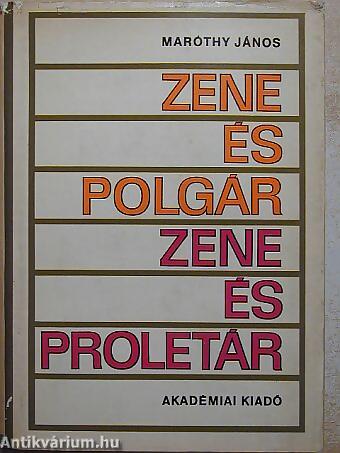There were changes in the history of Hungarian scholarship on music in the 1960s. Researchers started to analyze the personal and collective dimension of the reception and to think about how the historical past could be interpreted through popular music.
The two symbolic dates were 1962 and 1966. In 1962, József Ujfalussy’s book
A valóság zenei képe [The Musical Image of Reality] was published, in which he examines the texture of the music and the places and ways in which it was presented.
In 1966, János Maróthy’s major work,
Zene és polgár, zene és proletár [Music and Bourgeois, Music and Proletarian], was published. In his book, he elaborated on the different types of music in the twentieth century.
He studied the relationships between the bourgeois worldview and bourgeois music, as well as connections between the folk song and bourgeois music forms and historical types of the folk song. In his book, Maróthy dedicated a section to the relationships between folk and mass music, emphasizing the music of the workers and trying to examine the effects of folk music on workers’ culture. Maróthy turned away from the main directions of the local discussions on jazz. He was interested in the social roots of this type of music, its relationships to folk music, and its labor movement backgrounds. This book is one of Maróthy’s publications which had effects on later research methods.

